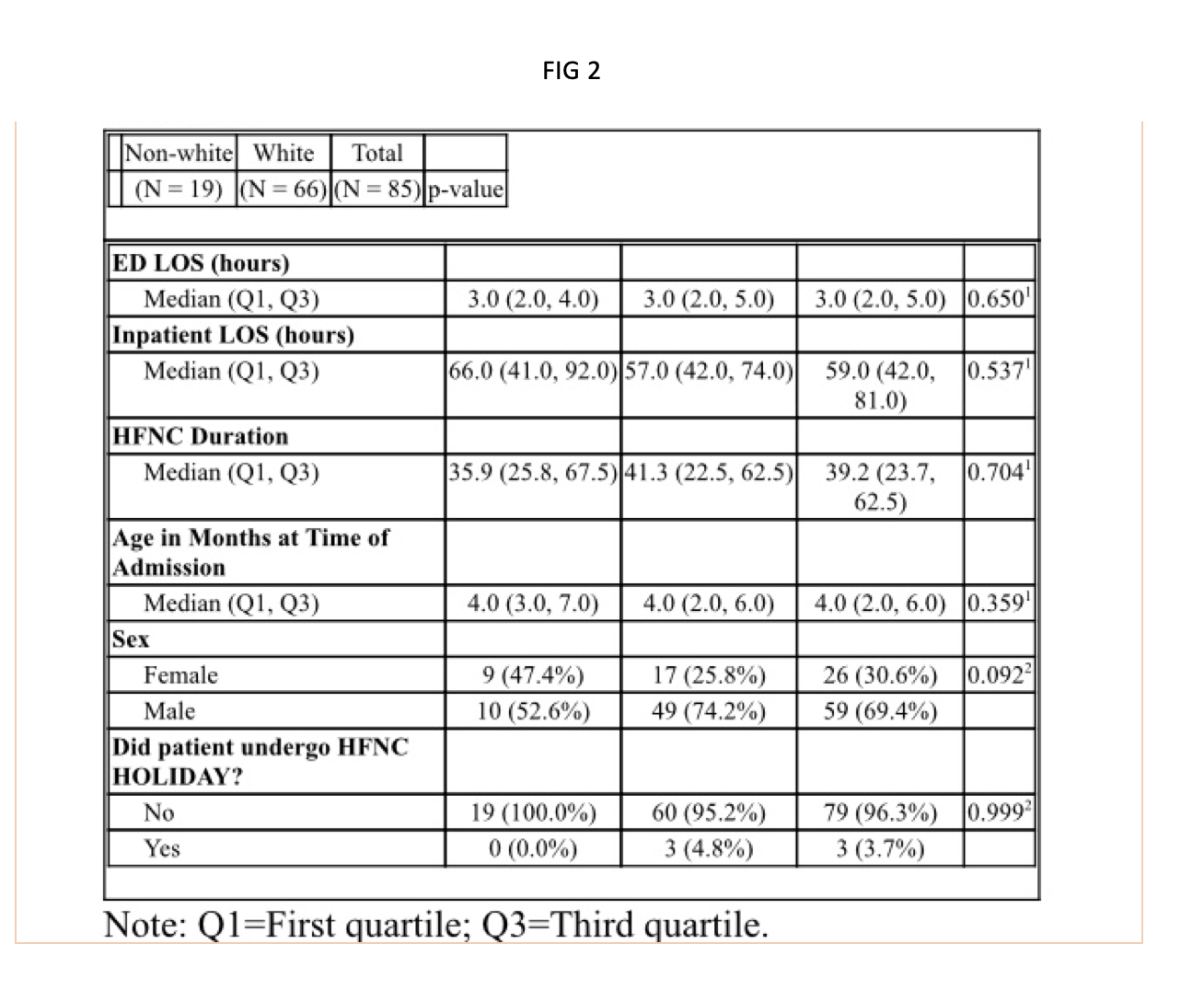Hospital Medicine: Hospital Medicine Quality Improvement
Hospital Medicine 5
738 - Elevating our Improvement Strategies - Equitably Reducing the Use of High Flow Nasal Cannula in Bronchiolitis
Publication Number: 738.414
.jpg)
Anyka A. Clouden-James, MD
Resident
Southern Illinois University School of Medicine
Springfield, Illinois, United States
Presenting Author(s)
Background:
High Flow Nasal Cannula (HFNC) use has increased in the treatment of bronchiolitis without an associated change in patient outcomes. Rapid weaning of HFNC is safe in children with bronchiolitis. No gold standard exists for the optimal initiation or weaning of HFNC in children with bronchiolitis. Care for children with bronchiolitis varies by race and ethnicity. We conducted our improvement project through participation in the American Academy of pediatrics (AAP) Value in Inpatient Pediatrics (VIP) Quality Network quality improvement collaborative HIFLO: High Flow Interventions to Facilitate Less Overuse.
Objective: Global
Aim: decrease the total hours of HFNC by 30% from baseline in patients admitted with bronchiolitis. Secondary objective:ensure improvements were applied equitably, across race and ethnicities. Process Measure: 80% of patients on HFNC will undergo a rapid discontinuation protocol (“High Flow Holiday”). Balancing Measures: no change in ED length of stay (LOS), Inpatient LOS and no significant rapid deterioration following HOLIDAY attempt.
Design/Methods: We included patients age ≥30 days to 2 years hospitalized with bronchiolitis, excluding prematurity < 32 weeks gestation, cardiopulmonary disease, chronic lung disease, or those with significant neuromuscular disease. Retrospective chart review was used to obtain baseline data from 12/2019 to 03/2020. Multiple PDSA cycles were used to reach our goal including education, assigning champions (“High Flow Heros”), peer-to-peer feedback, and EMR optimization during our intervention phase from 11/2021 to 03/2022 (Fig. 1). Improvements were tracked retrospectively on a run chart monthly and eventually a statistical process control chart. Occurrence of interventions and HFNC use across race and ethnicities, were compared using the Mann Whitney U test. Children who identified as Black/African-American, Hispanic, Latino, Pacific Islander/Asian or Other were included in our non-white category, as our patient population would not allow us to be powered enough to compare each group separately.
Results:
Over the 4-month period November 2021 to March 2022, we decreased hours of high flow nasal cannula by 30% with no change in balancing measures (Fig 1). We found no difference in “ High- Flow Holidays” by race/ethnicity (Fig 2).
Conclusion(s):
Through multiple PDSA cycles and collaboration with the VIP network, our children’s hospital safely and equitably decreased the hours of HFNC use in children admitted with bronchiolitis.

.png)
